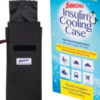- Empty cart.
- Continue Shopping
How to choose best Walkers for Older People

When it comes to maintaining mobility and independence, walkers for older adults can be a game-changer. A walker provides much-needed support and stability, helping seniors move around with confidence and reducing the risk of falls. However, not all walkers are created equal. The right walker should cater to an individual’s unique needs, offering comfort, safety, and ease of use. Simonsmed provides high-quality mobility solutions designed to enhance stability and independence for seniors.
Top features to look for in walkers for older people
1. Adjustable Height
One of the first things to look for when selecting a walker is the ability to adjust its height. Senior citizens come in various shapes and sizes, and a walker that is too tall or too short can cause discomfort and pose a safety risk. Walkers with adjustable height settings allow for a more personalized fit. Ideally, the walker’s handles should be at wrist height when the person is standing upright. This ensures that the senior can hold onto the walker without having to bend over or stretch too high, which could lead to strain or imbalance.
Why it matters: An adjustable walker provides better posture and balance, which can help reduce the risk of falls.
2. Lightweight Design
Seniors may experience muscle weakness or joint pain, making it difficult to handle heavy objects. A lightweight walker is easier to maneuver, carry, and transport. Walkers made of aluminum or other lightweight materials offer great strength without the added bulk. These walkers are not only easier to move but also easier to lift in and out of vehicles, especially if the senior enjoys being active outside the home.
Why it matters: A lightweight walker allows the senior to move more easily without feeling fatigued, reducing the effort needed for mobility.
3. Sturdy Construction and Durability
While it’s important for walkers to be lightweight, they must also be sturdy and durable. A walker that’s too flimsy or poorly constructed can compromise safety and lead to accidents. Look for walkers with strong frames made of materials like aluminum or steel, which offer durability and support. The walker’s base should also be wide enough to ensure stability. A well-built walker can withstand the wear and tear of daily use, ensuring that the elderly individual has a reliable tool for mobility.
Why it matters: A durable, sturdy walker provides better support, minimizing the risk of accidents and providing peace of mind.
4. Non-Slip, Soft Grips
The handles of the walker should be equipped with non-slip, soft grips to ensure that seniors can hold onto them securely. Many walkers come with foam or rubber grips that are easy to hold and comfortable, reducing hand strain. Non-slip grips also prevent the hands from slipping, even if they become sweaty. This feature is particularly important for seniors with arthritis or other conditions that affect their grip strength.
Why it matters: Soft, non-slip grips make the walker safer and more comfortable to use, allowing the elderly person to hold it without fear of slipping.
5. Easy-to-Use Brakes
For seniors who are more mobile but still require assistance, walkers with built-in brakes provide an additional layer of security. Walkers with brakes can help control the walker’s speed and provide stability when standing still. Brakes should be easy to use, requiring little effort to engage or release. This feature is especially important for seniors who may have limited strength or dexterity in their hands.
Why it matters: Easy-to-use brakes enhance safety by allowing seniors to stop and stabilize themselves when necessary.
6. Wheels or Glides
Walkers typically come with either wheels or glides. Glides allow the walker to slide across the floor, which is suitable for seniors who have a steady gait and only need light assistance. On the other hand, walkers with wheels make it easier for seniors to move more freely, especially if they have difficulty lifting the walker with every step. Depending on the senior’s level of mobility and strength, walkers with wheels may be more suitable for those who require a smoother, more fluid walking motion.
Why it matters: Wheels allow for greater mobility, especially on smooth surfaces, while glides offer more control on uneven terrain.
7. Foldability and Portability
For seniors who travel or like to leave the house regularly, a walker that is easy to fold and store is highly beneficial. Many walkers come with a folding mechanism that makes it simple to collapse and store in the trunk of a car or a closet. A portable walker is ideal for seniors who may need to take it to appointments, visit friends, or travel.
Why it matters: Foldable walkers are convenient for seniors who want to maintain an active lifestyle outside the home without being burdened by bulky equipment.
8. Seat Option
Some walkers come equipped with a built-in seat, which can be incredibly beneficial for seniors who tire easily or need to rest frequently. The seat provides a safe place to sit when needed, whether it’s while waiting for a ride, resting during a walk, or simply taking a break from standing. Walkers with seats typically include a sturdy frame with a comfortable, well-padded seat that can support the person’s weight. Some models even come with a small storage compartment under the seat for carrying personal items.
Why it matters: Having a seat on the walker allows seniors to rest when they need to, making the walker more versatile and convenient.
9. Height of the Walker’s Legs
In addition to adjustable handles, some walkers also offer adjustable legs. This is a particularly useful feature for seniors who are very tall or very short, as it allows them to customize the walker to their exact height. The walker’s legs should be at a height that makes it easy for the senior to use without stooping down or reaching too high. Adjustable legs ensure that the walker can accommodate various body types, providing a more comfortable and ergonomic fit.
Why it matters: Adjustable walker legs ensure a better fit, leading to more comfortable use and improved posture.
Conclusion
When choosing a walker for older adults, it’s important to focus on the features that provide maximum comfort, safety, and independence. A well-designed walker can enhance mobility, reduce the risk of falls, and help seniors maintain an active lifestyle. By considering the top features outlined above, you can ensure that you’re selecting a walker that best suits the needs of the senior in your life, helping them live more comfortably and confidently.



